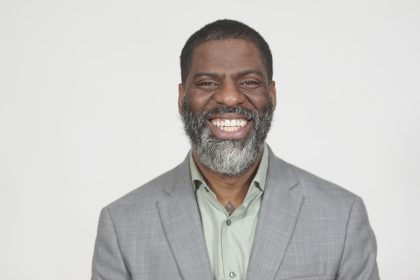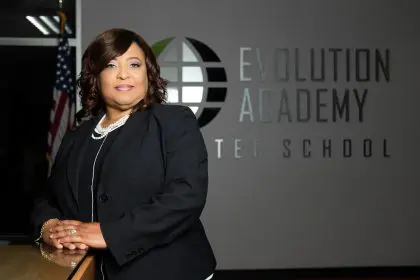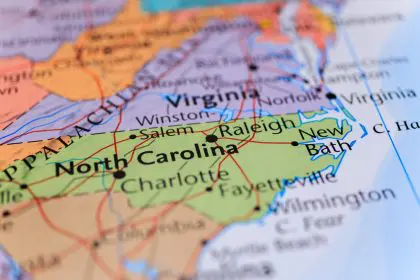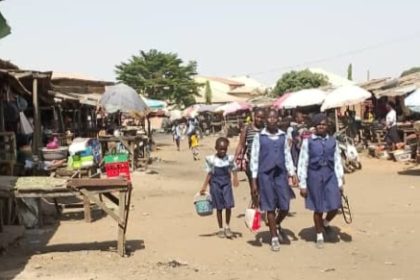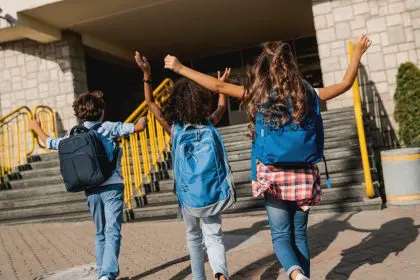San Francisco’s public schools operate within one of America’s most complex urban environments, confronting steep housing costs, significant income inequality, and diverse student needs. Yet against this challenging backdrop, many of the city’s schools have managed to achieve impressive results that defy expectations. This success story isn’t happening by accident—it reflects deliberate strategies, community partnerships, and educational innovations that could offer valuable lessons for school districts nationwide. A closer examination reveals how these educational institutions are turning potential obstacles into opportunities for student achievement.
The distinctive challenges facing San Francisco educators
Before examining the success factors, it’s important to understand the formidable challenges that make these achievements particularly noteworthy. San Francisco Unified School District (SFUSD) serves approximately 54,000 students across 122 schools. The student population reflects the city’s diversity, with families speaking more than 44 languages at home and nearly 29% of students classified as English language learners.
Economic disparities create additional complexities. Despite the region’s overall wealth, about 53% of SFUSD students qualify for free or reduced-price meals. The city’s extreme housing costs force many teaching professionals to commute long distances, contributing to teacher turnover and recruitment difficulties. These challenges are compounded by historical equity issues, budget constraints, and the lingering effects of pandemic-related learning disruptions.
1. Data-driven personalized learning platforms
San Francisco schools have become leaders in using sophisticated data systems to personalize education. The district has implemented a comprehensive data infrastructure that tracks not just academic performance but also attendance patterns, social-emotional indicators, and student interests. This information feeds into adaptive learning platforms that automatically adjust content difficulty based on student performance.
Teachers receive regular data visualizations highlighting student progress and identifying potential intervention points. The system flags students who might benefit from additional support before they fall significantly behind grade level. This proactive approach differs from traditional models that often wait until students demonstrate persistent problems before initiating interventions.
What makes the San Francisco approach distinctive is how these data systems connect across educational contexts. Information follows students between classrooms, grade levels, and even summer programs, creating continuous learning profiles that prevent progress gaps. This comprehensive view enables educators to build on strengths rather than repeatedly diagnosing the same challenges.
2. Teacher residency programs addressing staffing challenges
To combat the teacher shortage affecting many urban districts, San Francisco has pioneered an innovative teacher residency model that has become a national exemplar. The program recruits promising candidates from diverse backgrounds who receive subsidized master’s degrees in education while completing yearlong classroom residencies under mentor teachers.
Residents commit to teaching in San Francisco schools for at least four years after completing the program, creating a stable pipeline of well-prepared educators. The model emphasizes recruiting teachers from the communities they’ll serve, with approximately 68% of residents being people of color and 47% speaking a language other than English.
The program has demonstrably improved retention rates. While urban districts typically lose about 50% of new teachers within five years, 80% of San Francisco’s residency graduates remain in the classroom after the same period. This continuity allows schools to build institutional knowledge and strong student relationships rather than constantly rebuilding teaching teams.
3. Community school models integrating comprehensive services
San Francisco has embraced the community school concept, transforming selected schools into neighborhood hubs offering comprehensive services beyond academics. These schools feature on-site health clinics, dental services, mental health counseling, adult education classes, and family resource centers.
The integration of services addresses non-academic barriers to learning by meeting essential needs that might otherwise prevent students from focusing on education. For instance, a student struggling with untreated asthma can receive medical attention without missing a full day of class. Parents can access employment resources, housing assistance, and educational opportunities in the same building where their children attend school.
What distinguishes San Francisco’s implementation is its systematic approach to measuring outcomes across multiple dimensions. The district tracks not just academic improvements but also health indicators, family stability metrics, and community engagement levels. This comprehensive evaluation has demonstrated strong correlations between integrated services and improved attendance, behavior, and academic performance.
4. Culturally responsive curriculum frameworks
Recognizing its diverse student population, San Francisco has developed culturally responsive curriculum frameworks that elevate perspectives often marginalized in traditional educational materials. The district’s Ethnic Studies program, first implemented in select high schools and now expanding across grade levels, presents academic content through diverse cultural lenses.
This approach goes beyond simply adding multicultural content to existing curricula. Instead, it fundamentally reshapes how subjects are taught by incorporating diverse knowledge systems, historical perspectives, and cultural contexts. Mathematics instruction, for example, examines the contributions of various cultures to mathematical concepts while connecting abstract principles to community applications relevant to students’ lived experiences.
Research tracking implementation has shown promising results, with participating schools demonstrating higher student engagement, improved attendance, and better academic outcomes across demographic groups. Particularly notable are the positive effects for students previously showing disengagement from traditional educational approaches.
5. Multi-tiered systems of support for student well-being
San Francisco schools have implemented sophisticated multi-tiered systems of support (MTSS) that address academic, behavioral, and social-emotional needs through increasingly intensive interventions. This framework provides universal supports for all students while offering targeted assistance for those requiring additional help.
The district’s approach stands out for its integration of mental health services directly into the educational environment. Each school employs wellness coordinators who facilitate access to appropriate resources, from basic counseling to specialized therapeutic interventions. This model recognizes that student achievement depends on comprehensive well-being, not just academic instruction.
Data systems track intervention effectiveness across domains, allowing for coordinated support rather than disconnected services. For example, a student struggling academically receives not just tutoring but also assessment for potential underlying issues such as food insecurity or emotional distress. This holistic approach has led to measurable improvements in both academic outcomes and well-being indicators.
6. Innovation zones fostering educational experimentation
The district has established designated innovation zones where schools receive additional flexibility to pilot new educational approaches. These zones function as educational laboratories where promising practices can be developed, refined, and evaluated before broader implementation.
Schools within innovation zones can modify traditional scheduling, restructure staff roles, implement alternative assessment methods, and customize curricula to meet specific student needs. This controlled experimentation allows for responsive adaptation to emerging challenges without disrupting the entire system.
What makes San Francisco’s innovation zones particularly effective is their systematic approach to evaluating outcomes. Each innovation undergoes rigorous assessment using multiple measures, with successful approaches being documented and shared through professional learning communities. This commitment to evidence-based innovation has produced several scaled initiatives that have improved district-wide performance.
7. Strategic philanthropy partnerships funding enhanced opportunities
San Francisco’s proximity to technology companies and private foundations has enabled strategic philanthropy partnerships that expand educational opportunities beyond what public funding alone could support. The district has established a coordinated approach to these partnerships, aligning external resources with systemic priorities rather than pursuing disconnected initiatives.
These partnerships fund advanced technological infrastructure, expanded learning time programs, teacher development opportunities, and specialized academic initiatives. For example, collaboration with technology companies has created coding academies within comprehensive high schools, giving students industry-relevant skills while maintaining access to a well-rounded education.
The district maintains educational autonomy while leveraging external resources by establishing clear partnership agreements with measurable outcomes. This approach has allowed San Francisco schools to implement innovative programs that might otherwise remain theoretical due to budget constraints, while avoiding the fragmentation that sometimes accompanies philanthropic involvement in public education.
8. Language pathway programs supporting multilingual development
Responding to its linguistically diverse population, San Francisco has developed comprehensive language pathway programs that support multilingual development for all students. These programs range from dual language immersion models, where instruction occurs in two languages, to newcomer pathways specifically designed for recent immigrants.
What distinguishes San Francisco’s approach is its asset-based perspective on linguistic diversity. Rather than viewing non-English languages primarily as deficits to overcome, the district treats multilingualism as a valuable skill to cultivate. Students’ home languages receive academic recognition and development alongside English acquisition.
Research tracking graduates of these programs shows impressive outcomes, including higher academic achievement, increased college enrollment, and enhanced cognitive flexibility. The success of these language pathways has led to increasing demand from English-speaking families seeking bilingual education for their children, creating linguistically integrated learning environments that benefit all participants.
The emerging model for urban educational resilience
Collectively, these eight strategies reflect an emerging model for urban educational resilience that challenges conventional assumptions about the limitations of public education in complex environments. San Francisco’s approach demonstrates that seemingly intractable challenges can become catalysts for innovation when addressed through systemic thinking, community partnerships, and unwavering commitment to equity.
The district continues to face significant challenges, including budget constraints, demographic changes, and persistent achievement gaps. However, its willingness to reimagine educational structures while maintaining high expectations for all students offers valuable insights for other districts confronting similar circumstances.
As urban centers nationwide grapple with educational inequality, housing affordability, and changing student needs, San Francisco’s experience suggests that meaningful improvement is possible through deliberate strategy, collaborative partnerships, and sustained commitment to innovation. The district’s success in cultivating student achievement against considerable odds represents not just a local triumph but a potential roadmap for educational transformation in challenging urban contexts across America.








